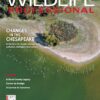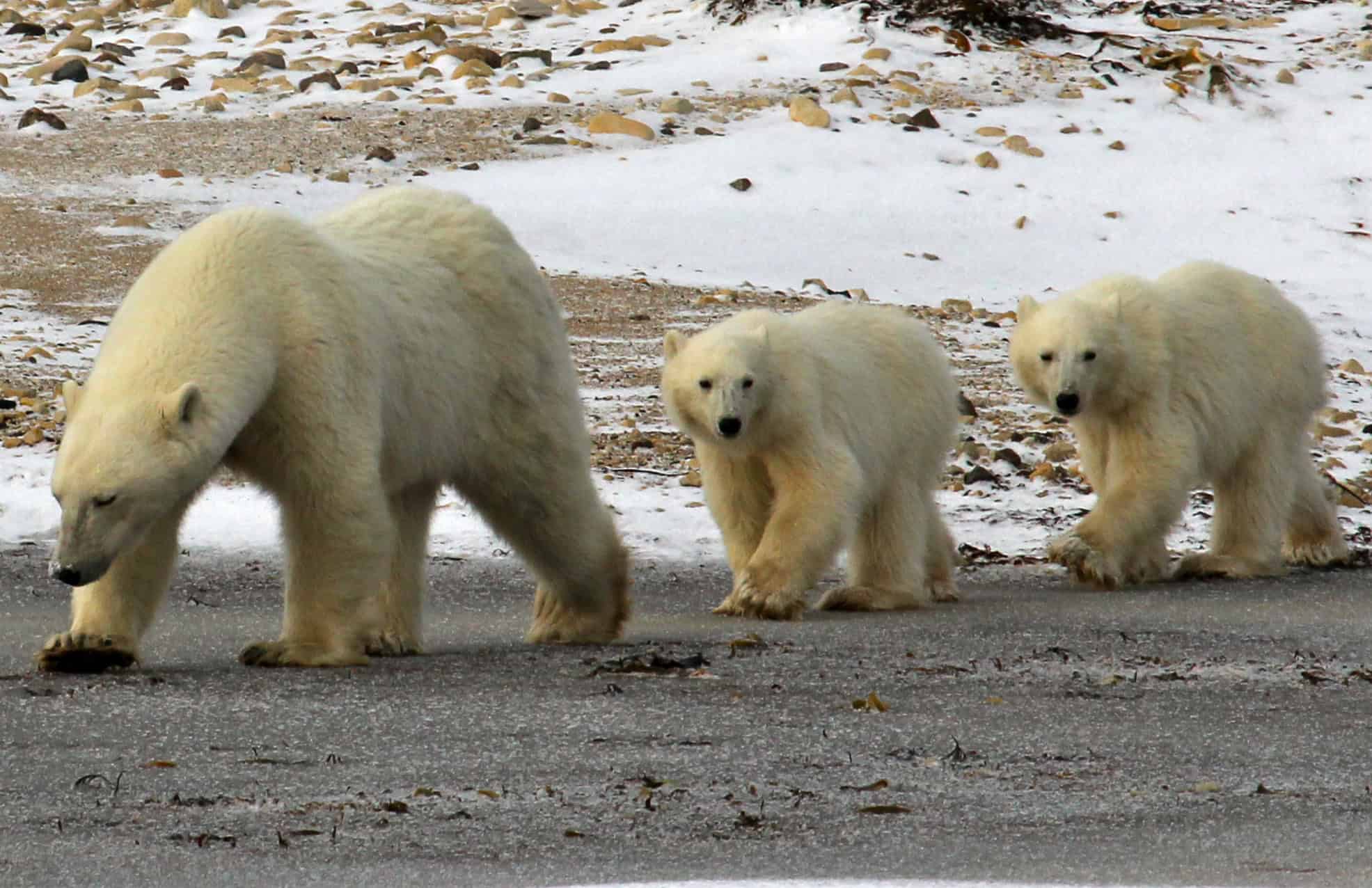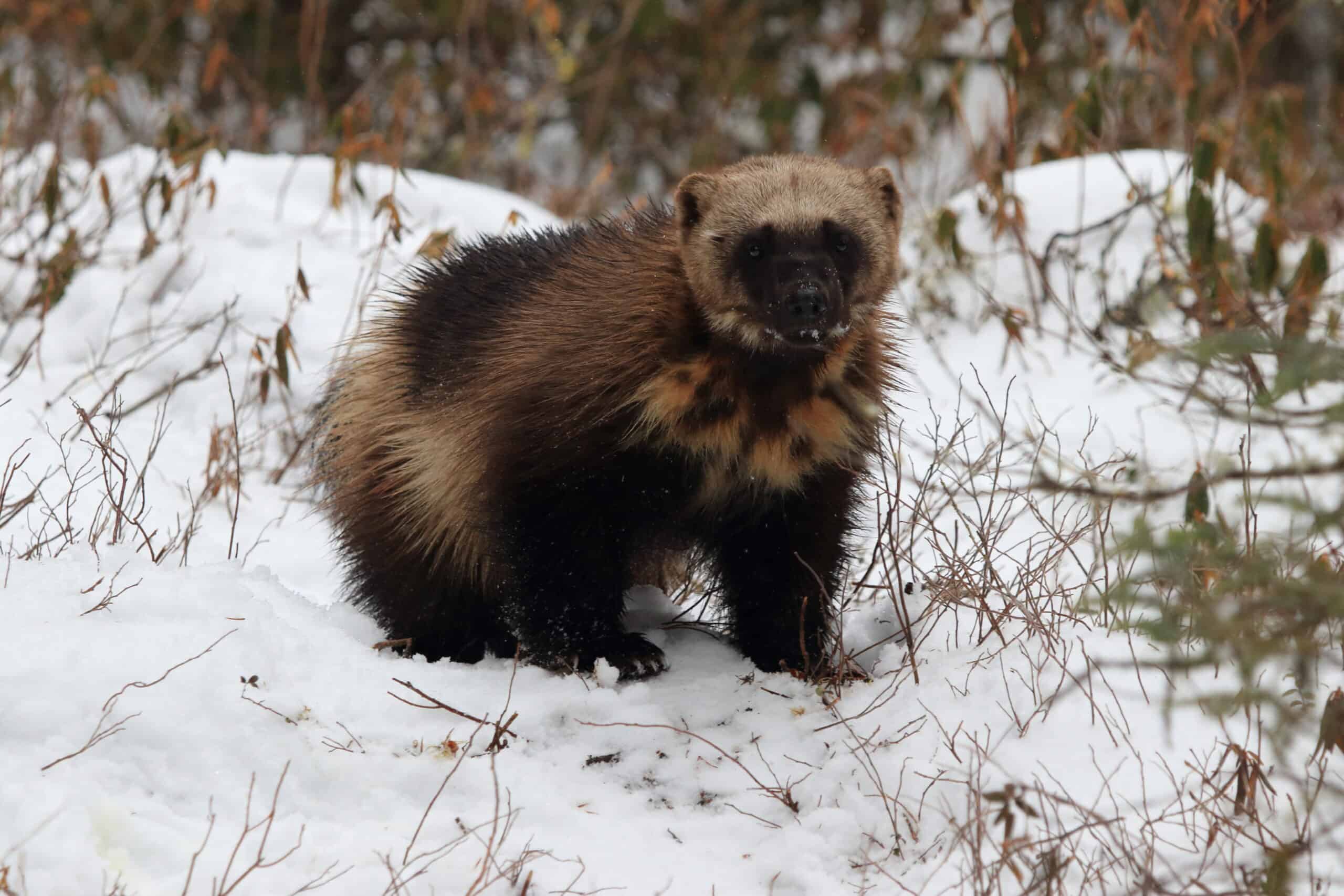Share this article
Wildlife Featured in this article
- Polar bear
Davis Strait polar bear population decreases slightly
Numbers have declined a small amount despite increase in harvesting in some areas
A polar bear population that encompasses parts of Greenland and several Canadian provinces and territories is only slightly decreasing, despite an increase in harvest and decreasing ice.
“We found that there was a slight decline in abundance between 2006 and 2018,” said Kylee Dunham, an applied quantitative ecologist at the Cornell Lab of Ornithology. But “this population is doing fairly well, all things considered,” she said.
The Davis Strait polar bear (Ursus maritimus) population, which lives in parts of Greenland, Newfoundland and Labrador, Quebec and Nunavut, occupies the sea, land and islands in the northeastern part of North America.
From 2005 to 2007, scientists monitored the bears by capturing them and giving them lip tattoos for identification. They also took tissue samples for genetic analysis. They estimated there were about 2,190 polar bears in the population at the time.
Surveying a vast territory
In a study published recently in Marine Mammal Science, researchers repeated the survey in 2017-2018, only this time scientists didn’t capture bears. Marcus Dyck, who died in a helicopter crash during a survey conducted in Lancaster Sound on April 25, 2021, and others flew along the coastlines of the range from August to October, on the mainland and islands, looking for bears. When they found one, they darted the animal to gather DNA for analysis back in the lab.
“They fire a dart that goes into their hind end and pulls out a little tissue,” Dunham said.
Population models revealed that the Davis Strait population had dropped a little, to about 1,944 polar bears. This represents a decline of roughly 1% per year, Dunham said. But overall, the outlook isn’t that bad for this population, Dunham said.
“It was a great effort by all the staff,” said Jim Goudie, Deputy Minister of Land and Natural Resources in Nunatsiavut, who took part in some of the surveys. At the same time, Goudie said that the overall survey numbers don’t match the data in Nunatsiavut, where Inuit are seeing an increase in polar bears.
“There are more polar bears in Nunatsiavut than there’s ever been,” Goudie said. This may be due to the difficulty in surveying such a large area as Davis Strait, or it may be due to finer-scale regional differences in the subpopulation of polar bears.
Dunham said that overall bear numbers in the huge area might still be decreasing, even if they increase in some local areas. Shrinking sea ice might be pushing bears into areas where they are more likely to encounter humans, for example, which leads to an increase in human-bear conflict.
Since the researchers didn’t collect fine-scale data on adult recruitment, they don’t have a good idea of why the population is decreasing, Dunham said. But the surveys didn’t reveal any changes in the body conditions of bears since the previous study that occurred more than a decade earlier.
Climate change may play a role in the decrease—there is certainly less sea ice in the area than there used to be. An increase in legal harvest in places like Nunavut or Nunavik in northern Quebec may also have had an effect, though not as much as wildlife managers in those areas might have hoped based on population goals.
“Essentially, those management measures were incredibly unsuccessful,” Goudie said.
Header Image: Polar bear numbers dropped slightly in the Davis Strait population. Credit: Emma








